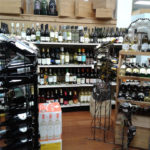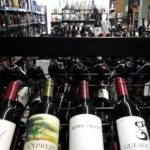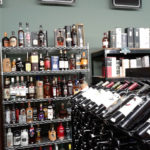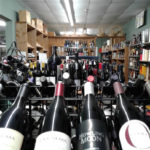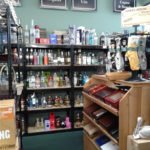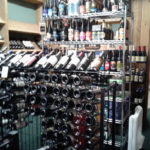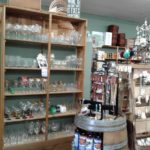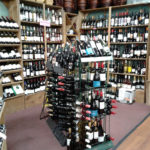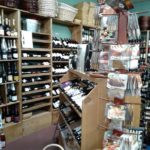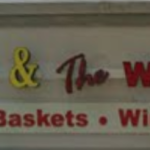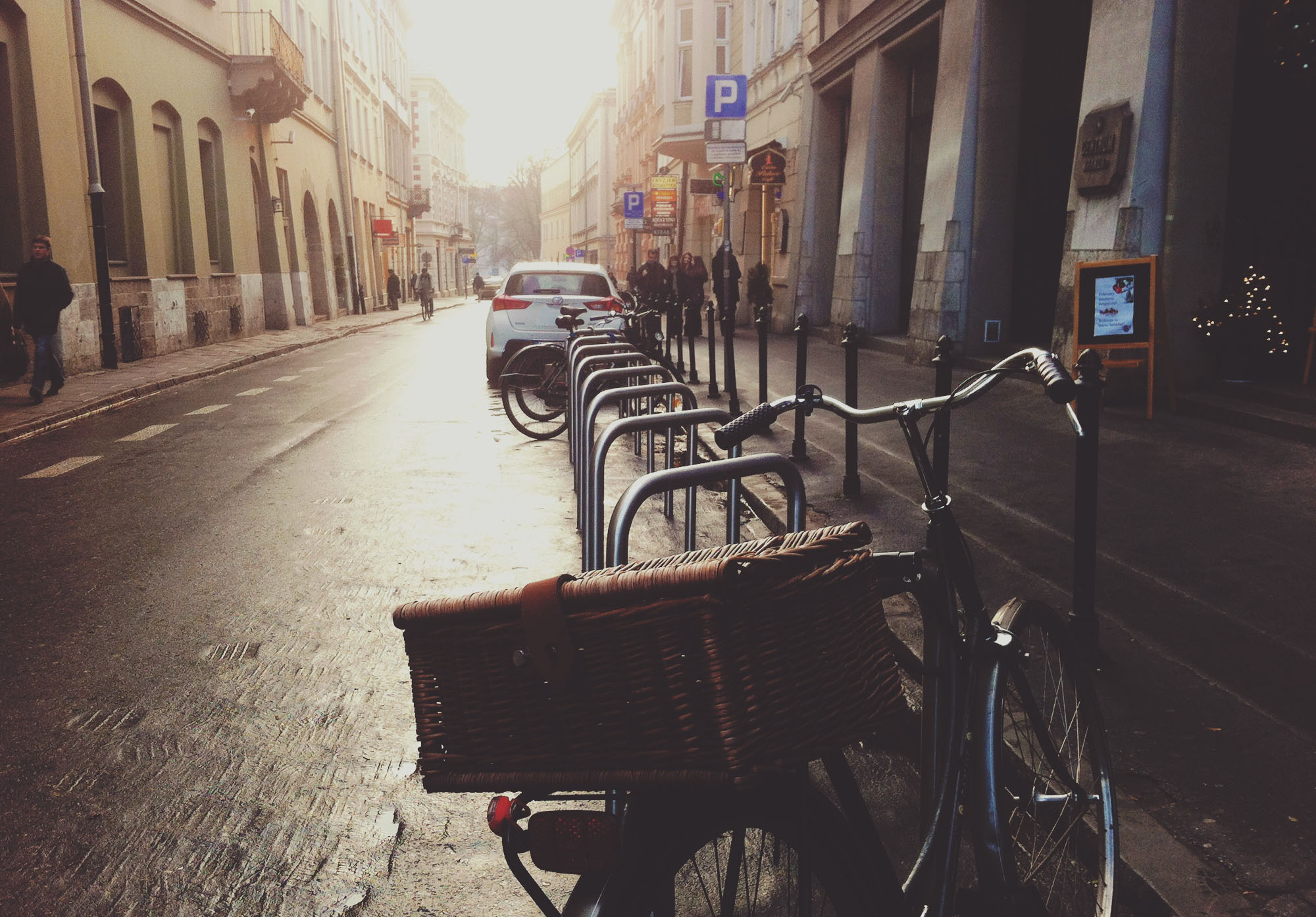[trx_title type=”3″ align=”center”]COLUMNS (FULL WIDTH)[/trx_title]
[trx_button skin=”global” style=”bg” size=”medium” fullsize=”no” icon=”icon-left-open-micro” align=”center” link=”/shortcodes/” target=”no” popup=”no” bottom=”30″]All shortcodes[/trx_button]
[trx_columns columns=”2″ bottom=”0″]
[trx_column_item]
1/2
Though wild grapevines have grown on the Italian peninsula since prehistory, historians are unable to determine precisely when domestic viticulture and winemaking first occurred. It is possible that the Mycenaean Greeks had some influences through early settlements in southern Italy, but the earliest recorded evidence of Greek influence dates to 800 BC. Viticulture was widely entrenched in Etruscan civilization, which was centered around the modern winemaking region of Tuscany.
[/trx_column_item]
[trx_column_item]
1/2
Because the ancient Greeks saw wine as a staple of domestic life and a viable economic trade commodity, their settlements were encouraged to plant vineyards for local use and trade with the Greek city-states. Southern Italy’s abundance of indigenous vines provided an ideal opportunity for wine production, giving rise to the Greek name for the region: Oenotria (“land of vines”). As Rome grew to a kingdom, the culture of Roman winemaking was increasingly influenced by the viticultural skills.
[/trx_column_item]
[/trx_columns]
[trx_columns columns=”3″ bottom=”0″]
[trx_column_item]
1/3
The Greek settlements of southern Italy were completely under Roman control by 270 BC. The Etruscans, who had already established trade routes into Gaul, were completely conquered by the 1st century BC.The Punic Wars with Carthage had a particularly marked effect on Roman viticulture.
[/trx_column_item]
[trx_column_item]
1/3
LIn addition to broadening the cultural horizons of the Roman citizenry, Carthaginians also introduced them to advanced viticultural techniques, in particular the work of Mago. When the libraries of Carthage were ransacked and burned, among the few Carthaginian works to survive were the 26 volumes of Mago’s agricultural treatise.
[/trx_column_item]
[trx_column_item]
1/3
Although his work did not survive to the modern era, it has been extensively quoted in the influential writings of Romans Pliny, Columella, Varro and Gargilius Martialis. One of the most important wine centres of the Roman world was the city of Pompeii, located south of Naples (home to a vast expanse of vineyards).
[/trx_column_item]
[/trx_columns]
[trx_columns columns=”3″ bottom=”0″]
[trx_column_item colspan=”2″]
2/3
The Pompeians themselves developed a widespread reputation for their wine-drinking capacity. The prevalent worship of Bacchus, the god of wine, left depictions of the god on frescoes and archaeological fragments throughout the region. Amphoras stamped with the emblems of Pompeian merchants have been found across the modern-day remnants of the Roman empire, including Bordeaux, Narbonne, Toulouse and Spain. Evidence in the form of counterfeit stamps on amphoras of non-Pompeian wine suggests that its popularity and notoriety may have given rise to early wine fraud.
[/trx_column_item]
[trx_column_item]
1/3
The 79 AD eruption of Mount Vesuvius had a devastating effect on the Roman wine industry. Vineyards across the region and warehouses storing the recent 78 AD vintage were decimated, resulting in a dramatic shortage of wine.
[/trx_column_item]
[/trx_columns]
[trx_columns columns=”4″ bottom=”0″]
[trx_column_item]
1/4
The damage to the trading port hindered the flow of wine from Rome’s outlying provinces, aggravating its scarcity. Available wine rose sharply in price, making it unaffordable to all but the most affluent. The wine famine caused panicking Romans to hurriedly plant vineyards in the areas near Rome, to such an extent that grain fields were uprooted in favor of grapevines.
[/trx_column_item]
[trx_column_item]
1/4
The subsequent wine surplus created by successful efforts to relieve the wine shortage caused a depression in price, hurting the commercial entrance of wine producers and traders. The uprooting of grain fields now contributed to a food shortage for the growing Roman population.
[/trx_column_item]
[trx_column_item]
1/4
In 92 AD, Roman Emperor Domitian issued an edict that not only banned new vineyards in Rome but ordered the uprooting of half of the vineyards in Roman provinces. Although there is evidence to suggest that this edict was largely ignored in the Roman provinces, wine historians have debated the effect of the edict on the infant wine industries of Spain and Gaul.
[/trx_column_item]
[trx_column_item]
1/4
The intent of the edict was that fewer vineyards would result in only enough wine for domestic consumption, with sparse amount for trade. While vineyards were already established in these growing wine regions, the ignoring of trade considerations may have suppressed the spread of viticulture and winemaking in these areas.
[/trx_column_item]
[/trx_columns]
[trx_columns columns=”4″ bottom=”0″]
[trx_column_item]
1/4
Domitian’s edict remained in effect for nearly two centuries until Emperor Probus repealed the measure in 280 AD. Among the lasting legacies of the ancient Roman empire were the viticultural foundations laid by the Romans in lands that would become world-renowned wine regions.
[/trx_column_item]
[trx_column_item colspan=”2″]
1/2 (2/4)
Through trade, military campaigns and settlements, Romans brought with them a taste for wine and the impetus to plant vines. Trade was the first and farthest-reaching arm of their influence, and Roman wine merchants were eager to trade with enemy and ally alike—from the Carthaginians and peoples of southern Spain to the Celtic tribes in Gaul and Germanic tribes of the Rhine and Danube.
[/trx_column_item]
[trx_column_item]
1/4
During the Gallic Wars, when Julius Caesar brought his troops to Cabyllona in 59 BC, he found two Roman wine merchants already established in business trading with the local tribes. In places like Bordeaux, Trier and Colchester where Roman garrisons were established, vineyards were planted to supply local need and limit the cost of long-distance trading.
[/trx_column_item]
[/trx_columns]
[trx_columns columns=”4″ bottom=”0″]
[trx_column_item]
1/4
Roman settlements were founded and populated by retired soldiers with knowledge of Roman viticulture from their families and life before the military; vineyards were planted in their new homelands.
[/trx_column_item]
[trx_column_item colspan=”3″]
3/4
While it is possible that the Romans imported grapevines from Italy and Greece, there is sufficient evidence to suggest that they cultivated native vines that may be the ancestors of the grapes grown in those provinces today. The Italian peninsula was known for its high-quality wines, outstanding examples of which included those of Pompeii. As the republic grew into empire beyond the peninsula, wine’s trade and market economy echoed this growth. The wine trade in Italy consisted of Rome’s sale of wine abroad to settlements and provinces around the Mediterranean Sea, yet by the end of the 1st century AD, its exports had competition from the provinces, themselves exporters to Rome. The Roman market economy encouraged the provinces’ exports, enhancing supply and demand. An elevated supply of wine meant lower prices for consumers.
[/trx_column_item]
[/trx_columns]
[trx_columns columns=”5″ bottom=”0″]
[trx_column_item colspan=”3″]
3/5
Because of the supply-and-demand economy, citizens possessed an ample supply of coinage, suggesting the existence of a complex market economy surrounding the wine trade of the Roman Empire. Adequate monetary supply meant that the citizenry put a great deal of thought into the market economy of wine. Rome’s defeat of Carthage in the Punic Wars brought the southern and coastal territories of Spain under its control, but the complete conquest of the Iberian peninsula remained unaccomplished until the reign of Caesar Augustus. Roman colonization led to the development of Tarraconensis in the northern regions of Spain (including what are now the modern winemaking regions of Catalonia, the Rioja, the Ribera del Duero, and Galicia) and Hispania Baetica (which includes modern Andalusia and the sherry winemaking region of Cádiz.
[/trx_column_item]
[trx_column_item colspan=”2″]
2/5
While the Carthaginians and Phoenicians were the first to introduce viticulture to Spain, Rome’s influential wine technology and the development of road networks brought new economic opportunities to the region, elevating grapes from a private agricultural crop to an important component of a viable commercial enterprise. Spanish wine was in Bordeaux before the region produced its own. French historian Roger Dion has suggested that the balisca vine (common in Spain’s northern provinces, particularly Rioja) was brought from Rioja to plant the first Roman vineyards of Bordeaux.
[/trx_column_item]
[/trx_columns]
[trx_columns columns=”6″ bottom=”0″]
[trx_column_item]
1/6
Spanish wines were frequently traded in Rome. The poet Martial described a highly regarded wine known as ceretanum from Ceret (modern-day Jerez de la Frontera).
[/trx_column_item]
[trx_column_item colspan=”2″]
2/6
Wine historian Hugh Johnson believes this wine was an early ancestor of sherry. Spanish wines penetrated more extensively than Italian wines into the Roman Empire, with amphoras from Spain discovered in Aquitaine, Brittany, the Loire Valley, Normandy, Britain and the German frontier. The historian Strabo noted in his work Geographica that the vineyards of Baetica were famous for their beauty.
[/trx_column_item]
[trx_column_item colspan=”3″]
3/6
Rome’s defeat of Carthage in the Punic Wars brought the southern and coastal territories of Spain under its control, but the complete conquest of the Iberian peninsula remained unaccomplished until the reign of Caesar Augustus. Roman colonization led to the development of Tarraconensis in the northern regions of Spain (including what are now the modern winemaking regions of Catalonia, the Rioja, the Ribera del Duero, and Galicia) and Hispania Baetica (which includes modern Andalusia and the sherry winemaking region of Cádiz.
[/trx_column_item]
[/trx_columns]





